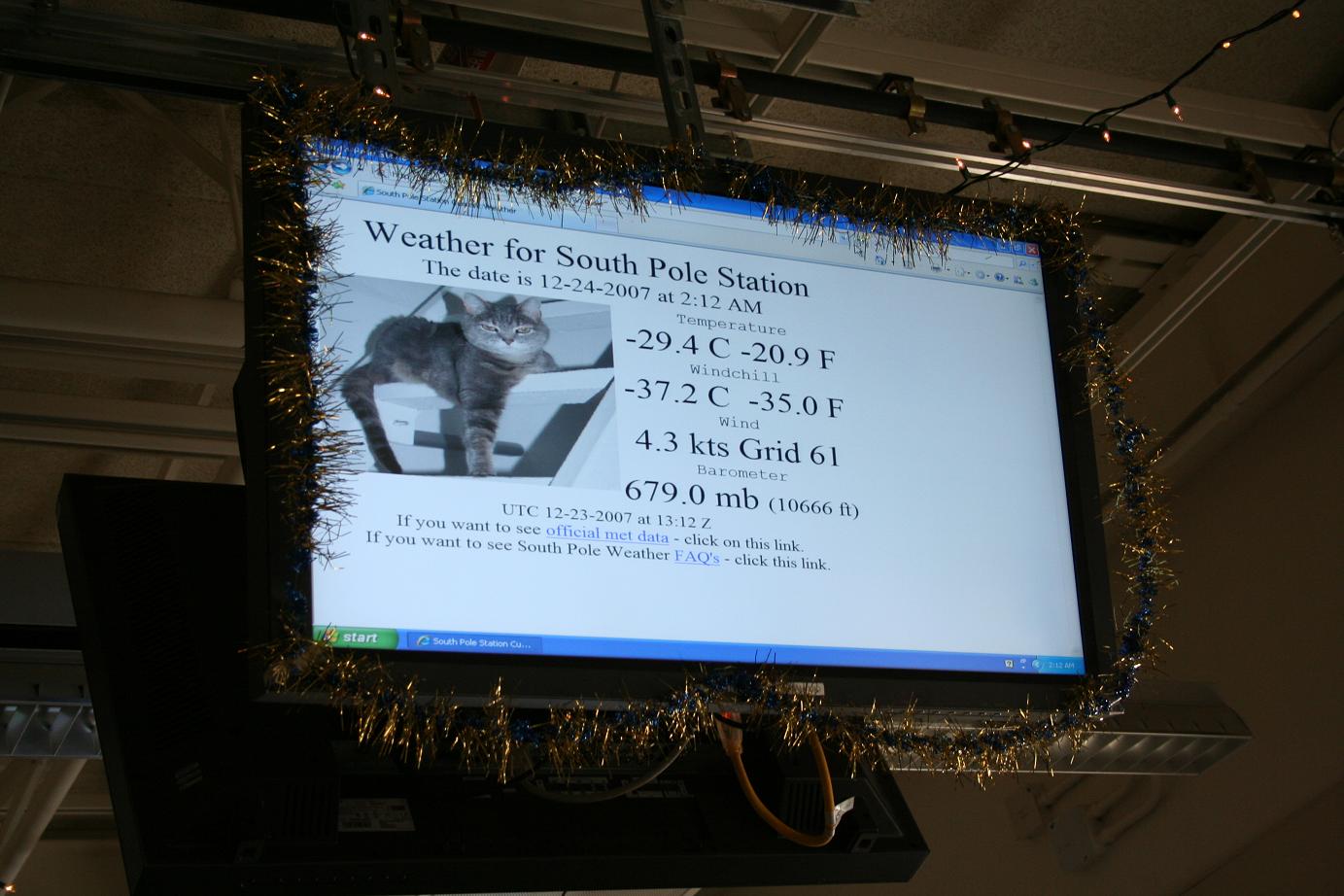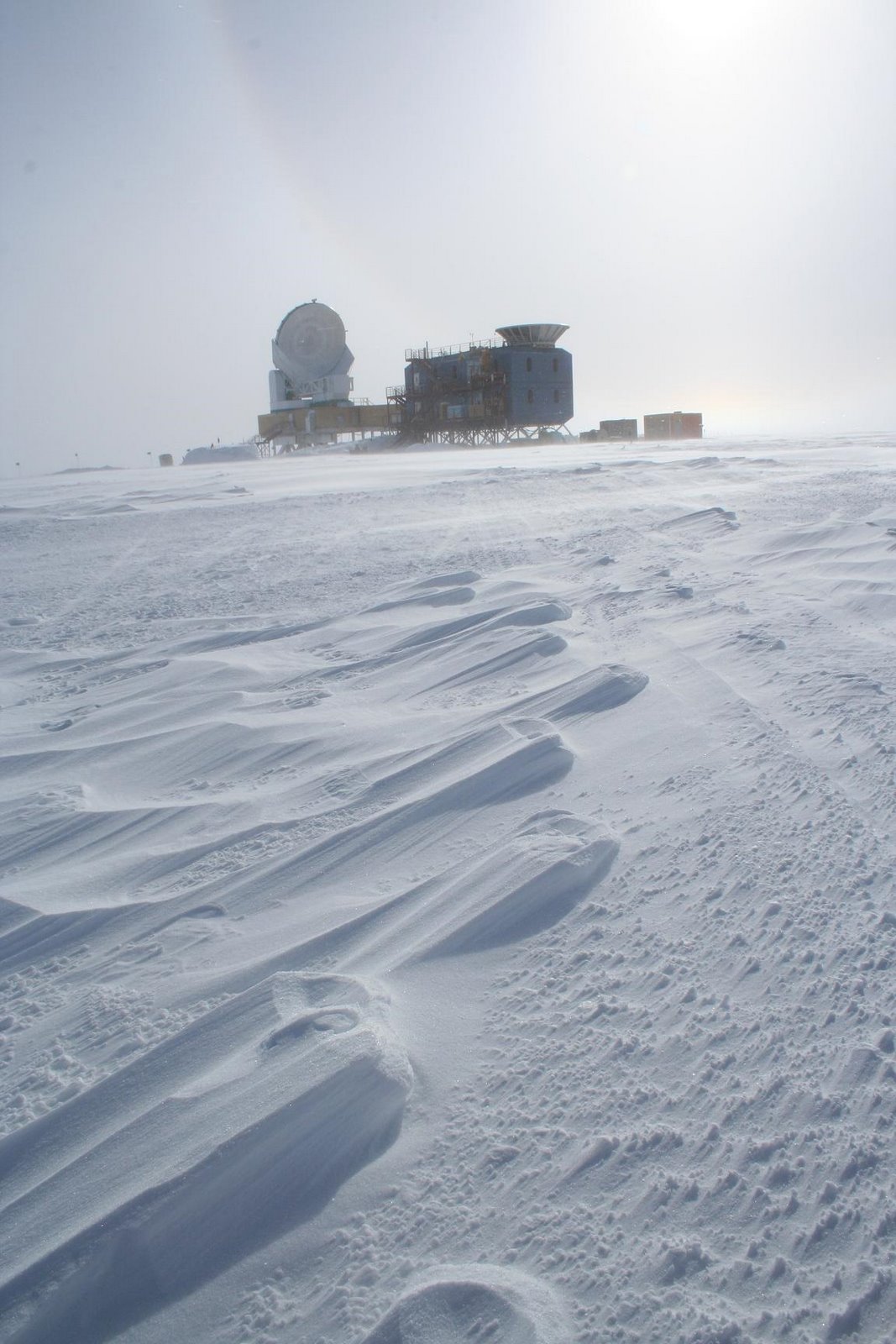What Passes for Weather
We’re guaranteed to have a white Christmas (of sorts) here at the South Pole. But it won’t snow. It is normally too cold here for any form of precipitation. The snow on the ground here is different from the December snows back home. It squeaks when you step in it, and the particles in the air are not snowflakes but tiny, diamond-like fragments of solid ice swept up by the wind. We do get days when the wind whips enough ice into the air that you can see no more than ten feet in front of you. On these “white out” days, the array of flags peppering the landscape begins to make a lot of practical sense, marking the paths back to the station. The wind causes massive snow drifts, and after a large wind storm, the flags above the snow may be the only way to know where the carefully groomed roads once were.
Every few minutes, television screens in the galley display the current weather. This consists of the temperature, the wind chill, the wind speed and direction, and the physiological altitude (mainly a function of the air pressure).

Often there is no perceptible change in the weather for days on end, but everyone still keeps an eye on the screens in the galley that show up-to-the-minute stats. If it’s not just out of habit, it is often because the weather page is accompanied by personal photographs submitted by polies. Each weather page shows a new photograph. These are frequently funny pictures from recent parties, or beautiful shots of sundogs. But one very thoughtful person recently submitted a picture that he had of one of my cats, knowing how much I have been missing them. It appeared on the screens during midrats (night shift’s lunch) today, and it made my day.
Wind determines the “weather” here. Lately, it has been warm and the winds have been mild, but irregular. Last night while I was working, it seemed that every time I looked out the window the landscape had completely changed character. One moment it was blue and sunny, the next it was grey and the sky was threatening to consume the horizon and merge with the ice below. In the space of an hour the view through the science lab window changed colors and moods several times.

Earlier in my trip I took a picture of some sand-dusted footprints that remained in sculptural relief after a wind-storm at McMurdo. The same thing happens here at the pole when the winds have been very high. With each boot-step, the snow is compressed. The wind eats away the loose powder around and (sometimes even under) the footprints before they begin to crumble away themselves. I took this photograph after a day of high winds and cold temperatures. You can see the tracks from someone making the trip out to the telescope. Enough ice was in the air that day to create a sun-dog, a glowing ring around the sun that is one of the real treats of being here.

 No comments
No comments 







